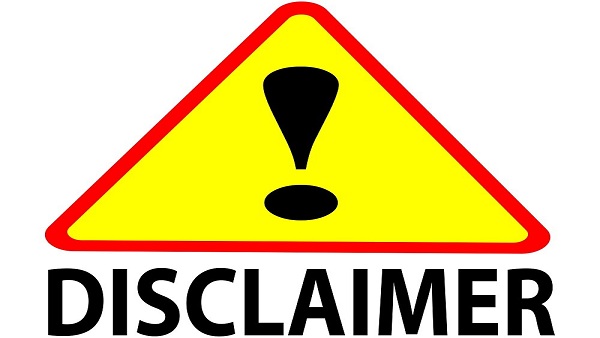The strength we have built up was a strong balance sheet with good provisioning, said Dinanath Dubhashi, MD & CEO, L&T Finance Holdings. “We had just raised the rights issue, built business strengths, built collection strengths, and built strengths on the liability side and each one of this was tested in quarter one,” he added. Edited excerpts:
Though it has been a tough patch for all, both personally and professionally, you have managed to grow 20% year on year. Let us talk about what has led to this growth.I would take this to last time I spoke with your channel, and that was at the end of the Q4 results. We had mentioned at that time that a few things that the company is doing is going beyond the profits and quarterly performance. That is to make sure that we build strengths which will help us to do well in the medium-to-long term, but also deal with any short-term problems which come. And the short-term problems came.
So, the strength we have built up was a strong balance sheet with good provisioning. We had just raised the rights issue, built business strengths, built collection strengths, and built strengths on the liability side and each one of this was tested in quarter one. Quarter one was very strange. First 15 days of April were absolutely okay. The second 15 days of April, entire May, and maybe the first 15-20 days of June were very bad in the sense. I mean forget business, people were afraid for their lives and we all know that. Then again, things have started improving towards the end of June and July they have improved even further.
The strengths that we have built have manifested. As you rightly put: profits are up 20%. Now I must also say that we are comparing to last year first quarter, which was also a bad quarter. So, I must be upfront about that. But still, a COVID quarter to COVID quarter 20% growth is a good performance. There are some things which have happened even better. We, even in this climate, in our rural book we have had our best ever first quarter disbursements. Even though for a month, month-and-a-half, everything was closed, we got our best ever first quarter disbursements. Our rural book is actually up by 8%. We have seen some run downs and some procurements in our infra book which has actually taken our retailisation quickly up to around 46%. These are the good things.
Second is cost of liabilities. The liability franchise we have built and cost of liabilities have remained very well in control. In fact, they have remained at the same level as in Q4 and substantially below last year Q1. All this has led to a good growth and before provision stage which has enabled us to take further anticipatory provisions, or what we call macro prudential functions, and make our balance sheet stronger.
Last year what we did was we built our macro prudential provision in the first two quarters and the last two quarters we reversed, which actually helped us. This method of taking early provisions and then using them helped us. We are doing that again. We have taken around 370 crores, but God forbid if a COVID wave three comes and I do not think anybody can predict that we will be ready and that balance is what actually signifies the importance of this quarter’s result. Of course, the icing on the cake is the 20% profit growth.
Why is that your NPAs for the quarter have gone up by nearly 75 bps? If one looks at the provisioning cover, it has changed.
Most definitely, in the COVID quarter the gross NPAs are going up, which is no surprise. I mean, it is a COVID quarter, so that is one thing. But if you observe carefully and compare year on year, the absolute amount of gross GST has actually come down. It is basically because the book has gone down, as I told you, the ratio has gone up. Just to point that out: the overall gross stage three absolute amount has actually come down a little bit, or let us say remained the same year on year. That is the first thing.
It is no surprise and I would not like to defend that that gross stage three will go up in a COVID year or in a COVID quarter, and hence what we need to do. And you never know, that trend may continue. We are hoping that it will reverse, but it may continue. Because of that what is important is we create additional provisions. Now provision coverage on NPA is a function of ECL model. So, it can go 3-4% up and down. But if you count our Rs 1,400 crore of additional provisions, which is there now on the balance sheet on standard assets, that prepares us tremendously for any NPA increase which may happen and that is the point that I am trying to make.
Rather than a quarter on quarter changing NPA in any COVID wave and especially the wave that was where customers were afraid, frankly our people were afraid of going out for a month or so. There were restrictions on movement, so most definitely it will affect. The important point is that we have made anticipatory provisions and are ready to phase any further effect of this that may happen. The positive side is businesses are picking up and rural India is definitely picking up. Most importantly, our people are now more than 90% vaccinated. We did a big campaign and more than 20,000 are now vaccinated and hence more able to travel. I think the medium-term prospects look good.
Given the second COVID wave is receding, can we say that the worst of the impact as far as collections or asset quality go is over?
I will talk both business as well as collections. Business farm, that is tractors, have started recovering very quickly. The important thing is the manufacturer space, there were supply chain problems last year in the first quarter. This year there were no supply chain problems. The manufacturing and the production were happening. So, the question was whether point of sales is open, tractor dealerships are opened, and two-wheeler dealerships are open. The rural dealerships opened earlier and the business started faster. The urban dealerships are just opening and we hope that the business will start from here.
If you talk about micro loans, as collection picks up, then disbursement will also pick up there. Housing definitely, again, lots of registration offices were closed. People were unable to visit sites to go and buy a house. Buyer and seller meetings were a problem. All these kept quarter one at a fairly low level. Slowly, these things are picking up, but the important thing is collections. Actually, the collection efficiencies which we have shown and we have put in the presentation have, other than micro loans, improved between May and June. All the other products – and that is important – and micro loans did not improve in June, but already in the first 15 days of July it has improved and substantially.
I would not be crystal ball gazing and say the worst is over. I think this can be the famous last words going by our COVID two experience. But most definitely, in most products June looked better than May and July is certainly looking better. Now yes, if a COVID wave three comes, who knows. I mean nobody was able to predict wave two, so I do not think anybody will be able to predict wave three. Hence, we should be prepared in all the aspects of the company. But to answer your question in one short sentence, July is definitely looking better than June.
In Q1 L&T achieved NIMs plus fees of 7.52%. What is your outlook for margins in FY22 given the uncertain environment?
Margins is a question of two things: one is interest cost, and I have said that our treasury has done extremely well. Q4 we thought was the lowest ever, and in Q1 we have done at the same level. We have reduced it maybe 1 bps, but that would be very good. The second good thing we have done is actually using this low interest cost regime locked into good medium-to-long term funds. Hence, we believe that even if the host of funds will definitely slowly go up from Q2 onwards, the trajectory will be lower and we will be able to retain our margin.
The second is a mix between retail and wholesale. As we said, at this time our infra business and infra book actually degrow. Infra book degrow and the rural book grew because of that the product mix move towards higher margin products. To answer your question, 7.5 is definitely way above what we guide, but yes, I do not think it should fall way below 7% or anything like that. We always guide between 6.5% to 7%, and we should be able to stay on the higher end of that guidance.














